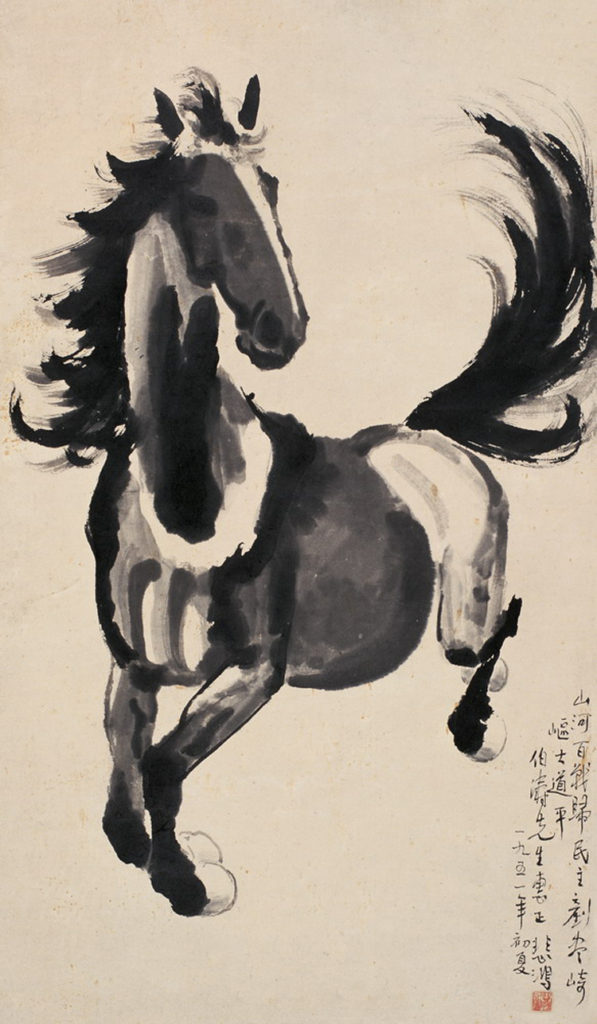
A horse adapted to parade and state processions, a high stepper and a showy animal, must have high spirit and a stalwart body. Not a horse with flexible legs, but one with short, supple and strong loins. If when he is planting his hind-legs under him you pull him up with the bit, he bends the hind-legs on the hocks and raises the fore-part of his body, so that anyone facing him can see the belly and the sheath.
The best way of instruction is to let the horse feel that whatever he does in obedience to the rider’s wishes will be followed by some rest and relaxation. For what a horse does under constraint, he does blindly, and with no more grace than a dancer would show if he was whipped and goaded. Under such treatment the performances of horse or man would seem to be displays of clumsy gestures rather than of grace and beauty. No, a horse should of his own free will exhibit his finest airs and paces at set signals, thus making the most graceful and brilliant appearance.
This is the attitude in which artists represent the horses on which gods and heroes ride, and men who manage such horses gracefully have a magnificent appearance. Indeed a prancing horse is a thing so graceful, terrible and astonishing that it rivets the gaze of all beholders, young and old alike. At all events no one leaves him or is tired of gazing at him so long as he shows off his brilliance.
